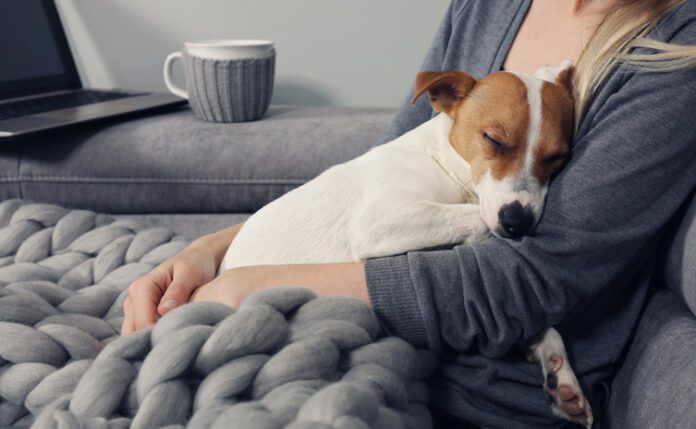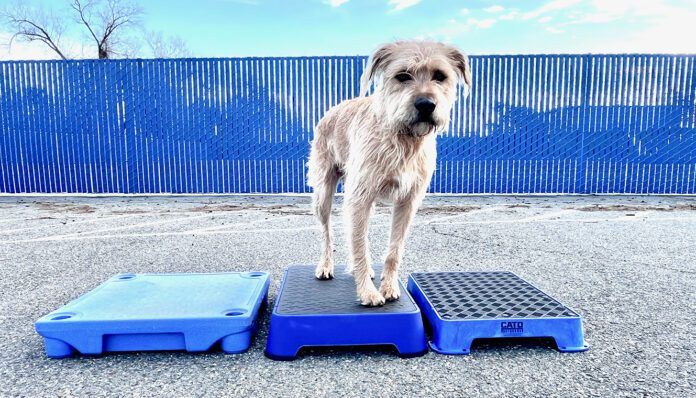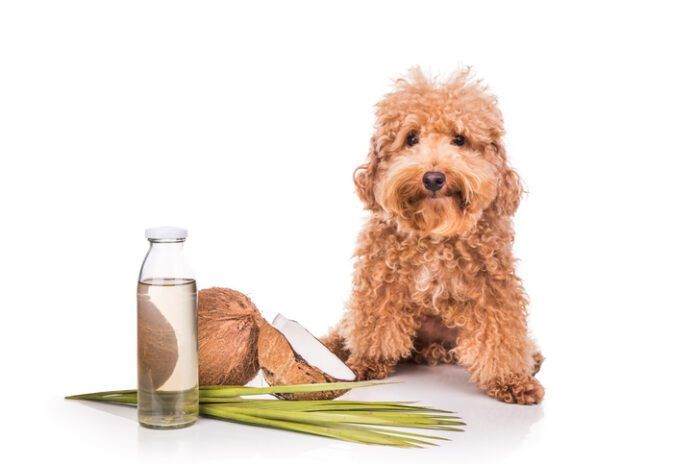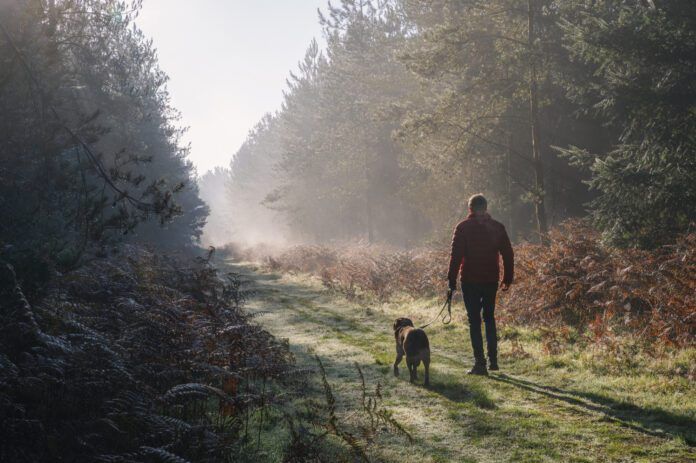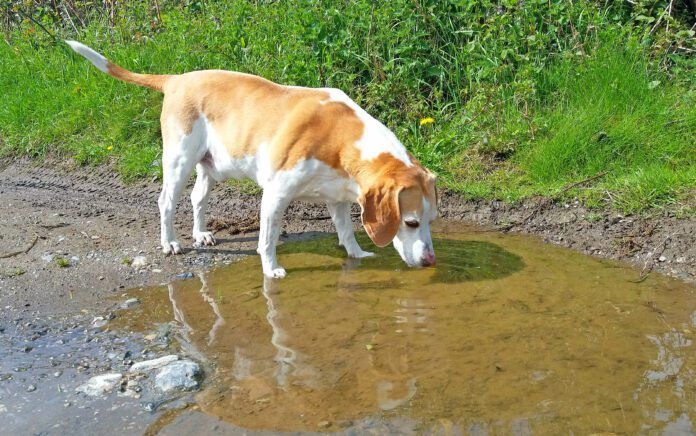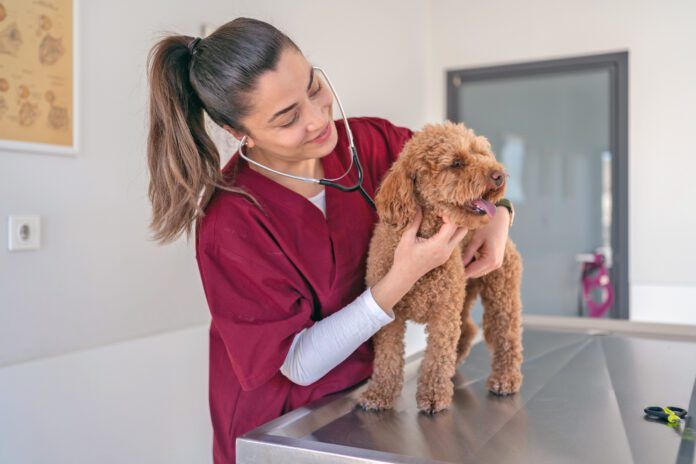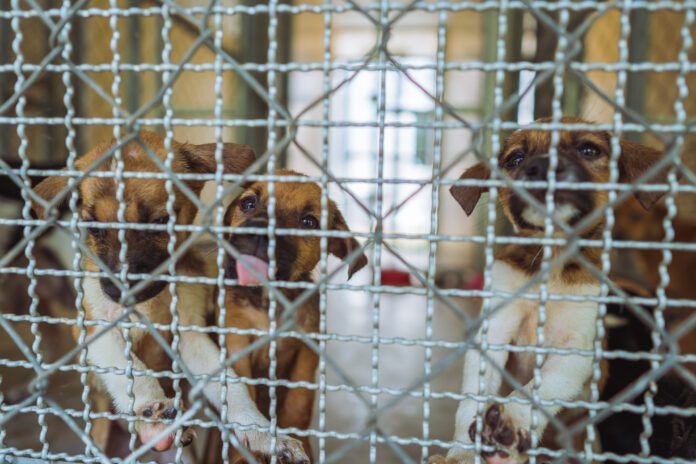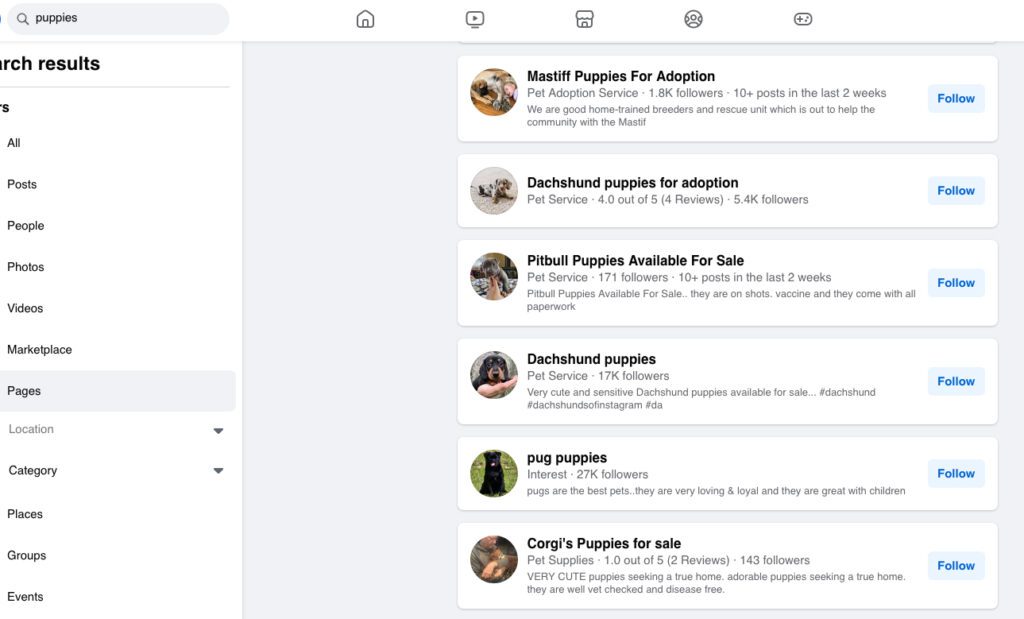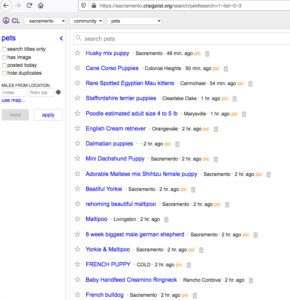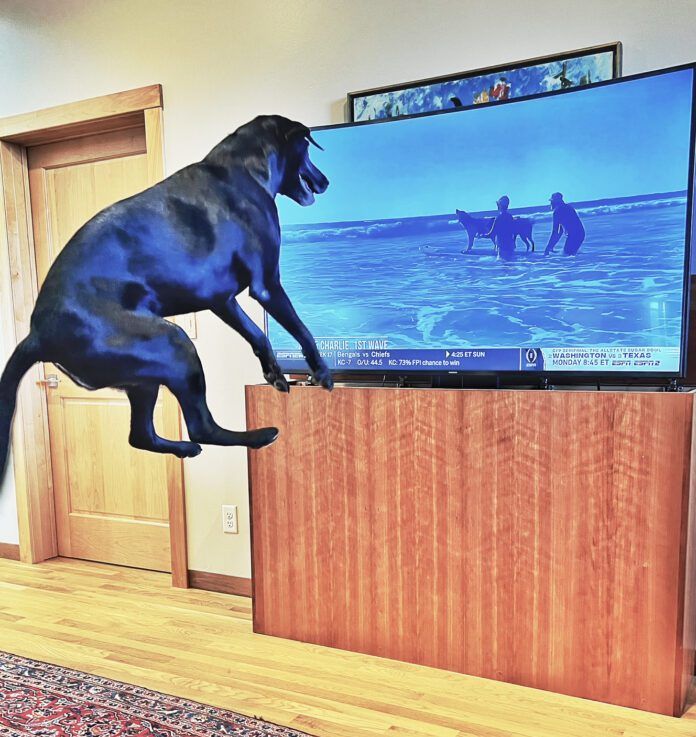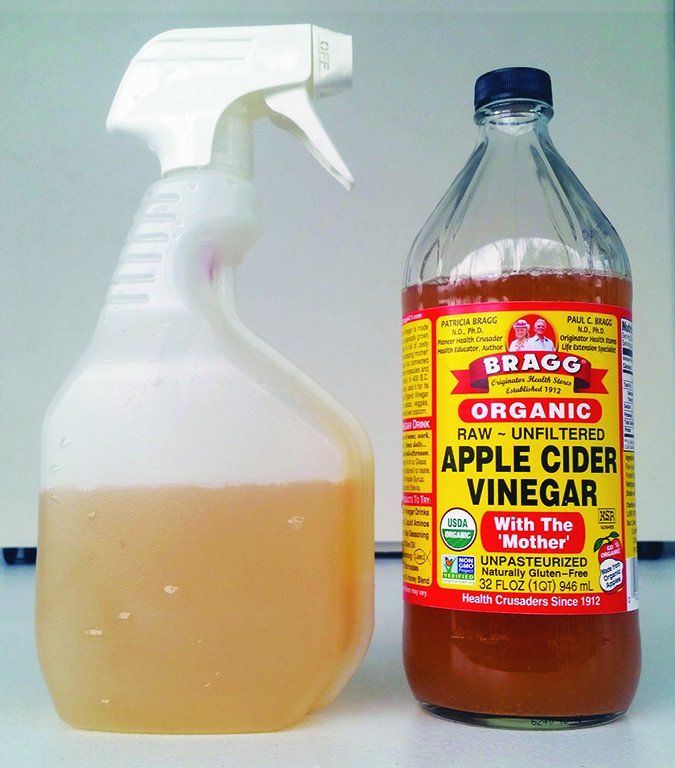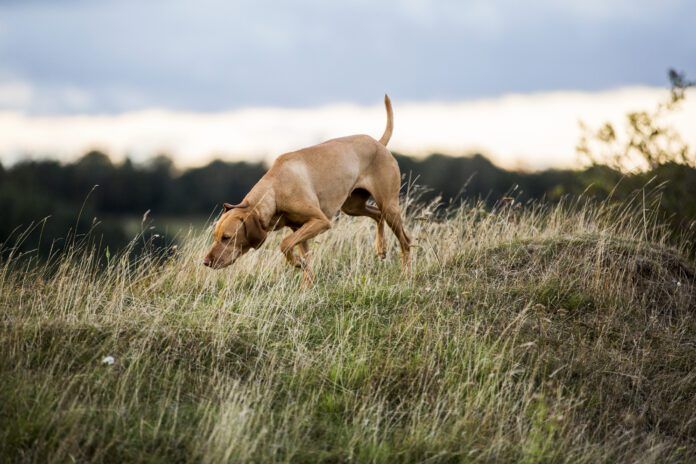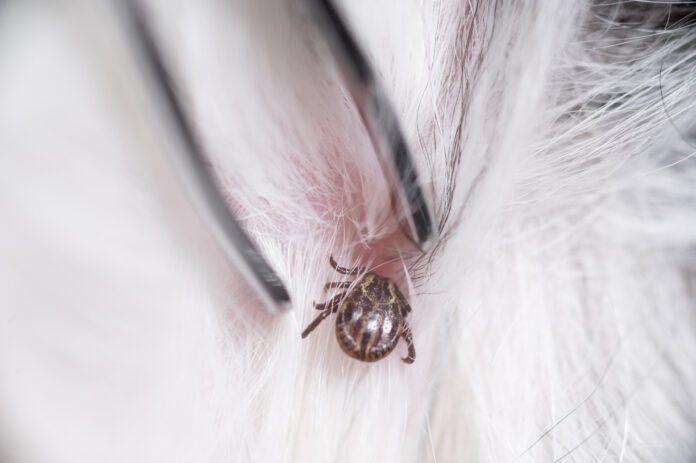Browsing through Internet postings about the benefits of apple cider vinegar for dogs will likely give you pause. Some laud it as a wonder product for everything – including curing cancer! Then you find the naysayers, who cite the FDA’s stand that apple cider vinegar has no nutrients. Of course, you already realize the truth is somewhere between.
It won’t cure cancer, but some research shows it shrinking tumors. Apple cider vinegar will not cure diabetes, either, although it’s been shown to help with blood sugar control.
The FDA is correct: apple cider vinegar contains only trace amounts of vitamins and minerals, except potassium. ACV has 11 grams of potassium in a tablespoon. But despite not being packed with essential nutrients, ACV does have health benefits for people and animals. The strong antioxidant and antibacterial qualities of apple cider vinegar is enough reason to include it in your dog’s care regimen.
Apple cider vinegar is made from just apples and water, making it completely safe for dogs. It is slightly acidic, with a pH of 3.1 to 5, which gives it properties that can soothe a dog’s overly alkalized digestive tract. Add a teaspoon of ACV to your dog’s water bowl and see if he’ll drink it! (Explained in detail later.)
For topical use, create an apple cider vinegar rinse for after your dog’s bath, as a remedy for irritated skin or a dry coat (1 cup ACV per 2-4 cups water). It’s common for dogs to get yeast infections in their paws; soaking your dog’s paws in ACV will relieve that too. When diluted and added to a spray bottle, apple cider vinegar is a strong disinfectant and even works as a mild flea repellent. See more ways you can use apple cider vinegar for dogs below.
11 Ways Dog Lovers Can Use ACV
So, how much can apple cider vinegar benefit your dog? Quite a bit, actually, provided you are sensible about your expectations. Apple cider vinegar may help dogs with:
1. Itchy, flaking skin and dull coats
2. Relief from hot spots
3. Repelling fleas
4. Keeping a dog’s ears clean, lessening the chance of infection
5. Improving digestion by balancing pH levels in a dog’s body
6. Ridding itchy paws and skin of bacteria
7. Relieving muscle soreness in older or active dogs
8. Rinsing soap residue or offensive odors from your dog’s coat
9. Preventing urinary tract infections (UTIs)
10. Helping relieve bladder stones in dogs
12. Diluting pet stains and odors in the home
Apple cider vinegar is made from apples/apple pectin. All vinegars are made from a liquid containing sugar, so apple vinegar begins as water and apples. When exposed to air, yeasts can grow, which cause the sugar to ferment and become alcohol. As it continues to ferment, natural (or added) acetic acid bacteria turn the alcohol into acetic acid, which is the main component of vinegar. Acetic acid is what gives vinegar its taste, smell and benefits. The word “vinegar” means “sour wine”, and indeed, red wine vinegar is simply red wine that’s been acetified.
Apple Cider Vinegar for Dogs: Proper Dosage
You’re familiar with apple cider vinegar as an ingredient in recipes, like salad dressings, dips, and drinks. It’s a healthy choice.
Although research on apple cider vinegar’s benefits is minimal, the test of time has made it a viable alternative for a number of everyday physical complaints and problems. Most experts agree that its documented human benefits also help dogs.
As is often the case, the exact dosage isn’t cast in stone, and you may need to experiment. Some people add it to food, at a rate of one teaspoon to one tablespoon for a 50-pound dog. Never feed straight apple cider vinegar. If you don’t see the desired benefit within 30 days of feeding apple cider vinegar, chances are it’s not working for that problem.
Many dog owners add it to the dog’s water bowl, but start with a small amount – a tablespoon in a big bowl of water, perhaps – and watch to make sure your dog still drinks the water readily before increasing the amount. However, when you add anything to water, be make sure you make a second bowl of plain water available, too. The last thing you want to do is curb your dog’s daily water intake.
That said, dogs who are used to the taste of apple cider vinegar in their water often find it easier to adjust to new water tastes, such as when traveling.
Apple cider vinegar helps digestion by increasing the stomach’s acid levels, which results in better absorption and fewer gastrointestinal symptoms like burps and gas. Apple cider vinegar promotes the growth of beneficial bacteria in the dog’s digestive tract. Some dog owners mix it into plain yogurt.
Research shows it lowers post-meal glucose levels in humans, and it can relieve constipation – of course, that means overdo it and you may face a messy outcome.
A dose of apple cider vinegar can help with minor bladder inflammation, too, but it won’t cure an actual urinary tract infection. That needs immediate veterinary attention.
Since apple cider vinegar has antimicrobial properties, mainly antibacterial, it may interrupt the development of some infections. Feeding it may help combat teary eye stains.
Be careful, though. You can feed too much apple cider vinegar. The first early symptom is usually vomiting. If you ignore that, you may eventually find increased tooth decay and decreased bone health. It can also irritate the mouth and linings of the esophagus.
ACV is a Safe, Reliable Disinfectant
Vinegar is a well-known cleaner and mild disinfectant. (Some people won’t use anything but white vinegar to clean their windows.) Apple cider vinegar’s cleansing and disinfecting qualities can be good for your dog, too. (If you’ve never used it before or your dog is the “sensitive” sort, do a 24-hour spot test before applying it to the dog’s entire body. Signs of allergy would include vomiting, reddish skin, and/or itching and scratching.)
Diluted 50-50 with water and applied using a sprayer or a sponge, an apple cider vinegar rinse will remove leftover soap residue after a bath, help alleviate dandruff and itchy skin and leave the coat shiny and soft. To use it as a dandruff preventative, rub the diluted solution into the dog’s skin just prior to giving him a bath (never do this without having done the 24-hour spot test), then wash it off in the bath.
If you’re like most of us, and prefer to minimize your dog’s exposure to chemicals, apple cider vinegar might be the answer for a natural flea and/or flying insect repellent. While it’s not the answer for a flea infestation, it does a good job combatting small incidences, such as added protection on a walk during heavy bug season.
Apple cider vinegar has a cooling sensation, making it a good choice for small topical problems, like burns, bruises, and hot spots. Be careful, though. If the wound is at all open or raw, apple cider vinegar will sting!
It’s especially useful to minimize itchy feet and ears. Thoroughly soak the dog’s paws in a vinegar-water mix. Use cotton swab or gauze pads soaked in the mixture to clean ears.
A massage with a diluted ACV mix will go a long way toward relieving strained muscles from overactivity. Warm the solution slightly for added benefit.
Although you may read articles to the contrary, apple cider vinegar is not a strong choice for treating lice, fungus, warts, or ear infections. Your best bet in these situations is veterinary attention!
Since ACV is a great deodorizer and safe for your dog, you can use it to disinfect dog toys and bedding. Spray it anywhere you need odor control and/or a gentle disinfectant.
What Kind of Vinegar is Best for Dogs?
Like most things nowadays, the choices for vinegar border on over-whelming. You’ll see words like raw, natural, unpasteurized, organic, and unfiltered. There are also white vinegars, balsamic vinegars, and wine vinegars. We’re looking at apple cider vinegar, which is usually an amber color (light or dark) and made from apples.
For health uses, choose raw, unpasteurized apple cider vinegar, preferably in a glass bottle. Why?
“Raw” or “unfiltered” apple cider has the “mother” in it, which is the name of the brown stuff at the bottom of the bottle. These are fermentation leftovers, and they include all the good live bacteria and enzymes that give the product its health benefits. Of course, if you’re using this vinegar for cleaning, you want to strain this out before you use it. (Can’t stand the look of the debris in the bottom? Then look for “filtered” apple cider vinegar, which was strained to remove the debris.)
“Unpasteurized” is recommended because the process of pasteurization – a heat process – can kill the good bacteria we want. If you’re willing to spend the extra buck or two, choose an organic apple cider vinegar. No reason not to avoid pesticides when you can, especially if your dog is going to eat the product.
Glass containers do not pose the risk (as plastic bottles can) of harmful chemicals leaching into the product.
Apple Cider Vinegar Controversy
In a past Whole Dog Journal article, we discussed some of controversies surrounding apple cider vinegar.
Not everyone agrees that apple cider vinegar should be given to dogs. Pat McKay, canine nutritionist and author of the natural diet book, Reigning Cats and Dogs, doesn’t like cider vinegar, and she doesn’t mince words; she calls it poison.
“I believe Peter J. D’Amado is on the right track in his book, Eat Right for Your Type,” she says. “Each of the human blood types has an ideal diet, and the diet recommended for type O most closely resembles the meat-based diet on which dogs evolved. D’Amado warns that cider vinegar is very damaging to this type, and I agree with him. I happen to be a type O, and apple cider vinegar has always made me feel miserable. I never knew why until I read his book. I believe dogs have a similar reaction because even small quantities of vinegar can throw their bodies’ pH out of balance.”
Marina Zacharias, pet nutritionist and publisher of Natural Rearing newsletter, shares McKay’s concern about pH levels. She recommends that owners have their dogs’ blood and urine tested before adding cider vinegar to their daily diet.
“If a dog’s system is too alkaline,” she says, “cider vinegar will help, but by itself it may not correct the problem and the dog will need additional support. If the dog’s system is too acidic, which is a condition called acidosis, the result can be stress on the pancreas and adrenal organs, which are important regulators of blood pH levels. The symptoms of acidosis range from diarrhea or constipation to low blood pressure, hard stools, and sensitivity of the teeth and mouth. Often we see acidosis in combination with other conditions, such as kidney, liver, and adrenal problems. In certain cases, adding vinegar to a dog’s food could aggravate an already-existing problem in the body.”
Are adverse side effects likely? If a dog is allergic to vinegar, he might vomit, scratch furiously, or have a similarly obvious reaction. Although there is much debate on this issue, some believe that vinegar may worsen chronic ear infections. Long term use of ACV on dogs who are sensitive to it has been associated with tooth decay and bone deterioration. Too much could also inflame a dog’s mouth and esophagus.
“You have to apply common sense,” says Sue Ann Lesser, D.V.M. “Most dogs are notoriously over-alkaline, and cider vinegar will help them. If a dog’s system is overly acidic, you’ll see clinical signs, such as obvious symptoms of illness. I know quite a few dogs that take cider vinegar according to the directions in Wendy Volhard’s book, and I don’t know of any that have had bad results.”
In her book The Holistic Guide for a Healthy Dog, author Wendy Volhard recommends using pH paper strips to check the dog’s first morning urine. “If it reads anywhere from 6.2 to 6.5, your dog’s system is exactly where it should be,” and no ACV is needed, she says. “But if it is 7.5 or higher, the diet you are feeding is too alkaline, and apple cider vinegar will reestablish the correct balance.”
Volhard recommends one teaspoon to one tablespoon twice daily for a 50-pound dog.
Cynthia Foley is a freelance writer in upstate New York. She competes with her Papillons in dog agility.


